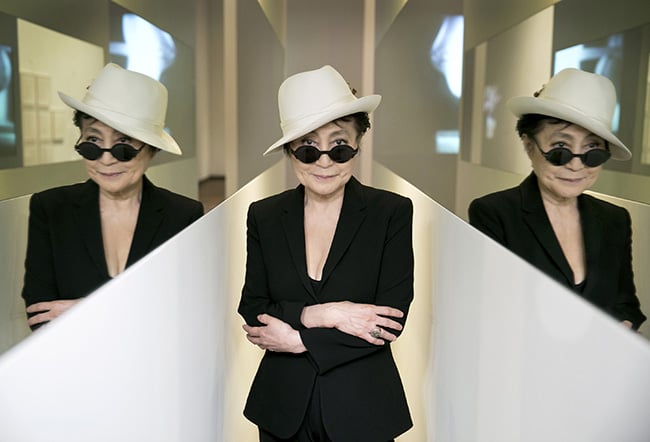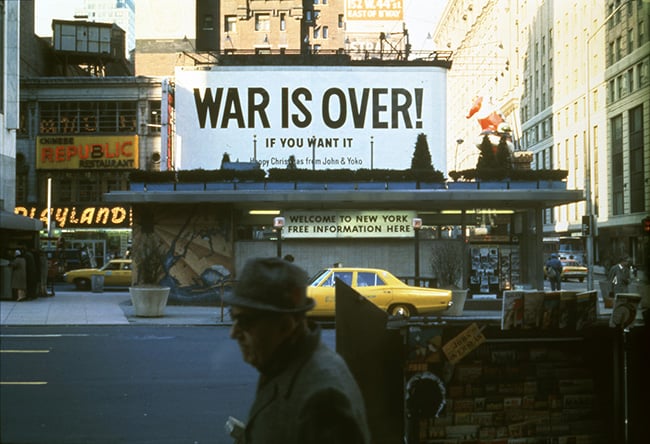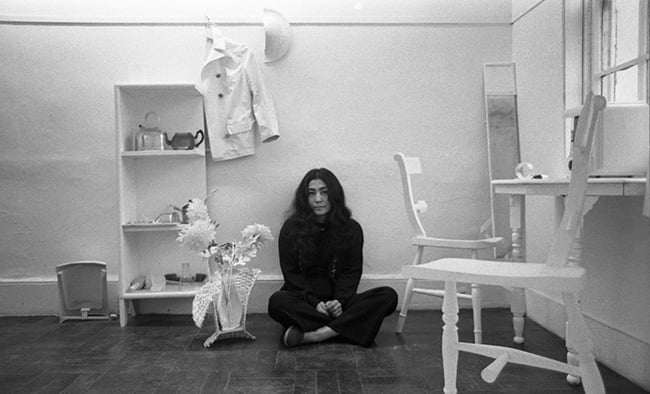Art & Exhibitions
Inside Yoko Ono’s First French Retrospective at MAC Lyon
"Yoko Ono: Lumière de L’aube" is on display until July 10.

"Yoko Ono: Lumière de L’aube" is on display until July 10.

Cait Munro


Photo: Bjarke Orsted/Yoko Ono.
Following “One Woman Show, 1960–1971,” Yoko Ono‘s recent, well-received survey at New York’s Museum of Modern Art, the Musée d’Art Contemporain de Lyon (MAC Lyon) is hosting her first comprehensive retrospective to take place in France. “Yoko Ono: Lumière de L’aube,” which opened March 9, includes over 100 works created between 1952 and today.
The show encompasses all three floors of the museum’s exhibition space, and features examples from all aspects of Ono’s diverse oeuvre, including paintings, poems, performances, photographs, installation, sound art, and films.

Yoko Ono et John Lennon, WAR IS OVER! (IF YOU WANT IT), 1969.
Photo: Yoko Ono.
“Ono is a rare individual, who emerged as an artist, fully formed,” the museum’s press release reads.
Highlights include the 1966 film Number Four (commonly referred to as Bottoms) which features close-ups of a naked bottom walking on a treadmill, as well as images from Bed-In, the 1969 anti-war demonstration Ono staged with husband John Lennon. Also on display is Ex It, a striking installation of over a hundred coffins with fruit trees growing out of them.
“She says something relevant that concerns both art and society: the ball in your own court. If you want things to change, to improve you have to stop blaming the others. Take responsibility,” curator Thierry Raspail told Euronews.

Yoko Ono, Walking on Thin Ice (1981). Film still.
Photo: Allan Tannenbaum/Yoko Ono.
The exhibition’s name, “Lumière de L’aube,” French for “light of dawn,” was chosen by Ono herself. It is a reference both to her own body of work, where “light” is a commonly used buzzword, as well as to the Lyon’s unique history with the Lumiere Brothers, who were widely credited as the first filmmakers in history.
If Ono’s connection to Lennon and the Beatles caused her work as an artist to be overlooked for several decades, it appears both the art world as well as the wider pop cultural sphere have finally gotten the message that the Fluxus artist is—and always has been—worth watching.
“These days, her work is essential viewing; it is utterly relevant,” reads a statement from the museum.

Yoko Ono, Half-a-Room (1967) from “Half-a-Wind” at Lisson Gallery.
Photo: Clay Perry/Yoko Ono.
“Yoko Ono: Lumière de L’aube” is on view at MAC Lyon March 9–July 10, 2016.